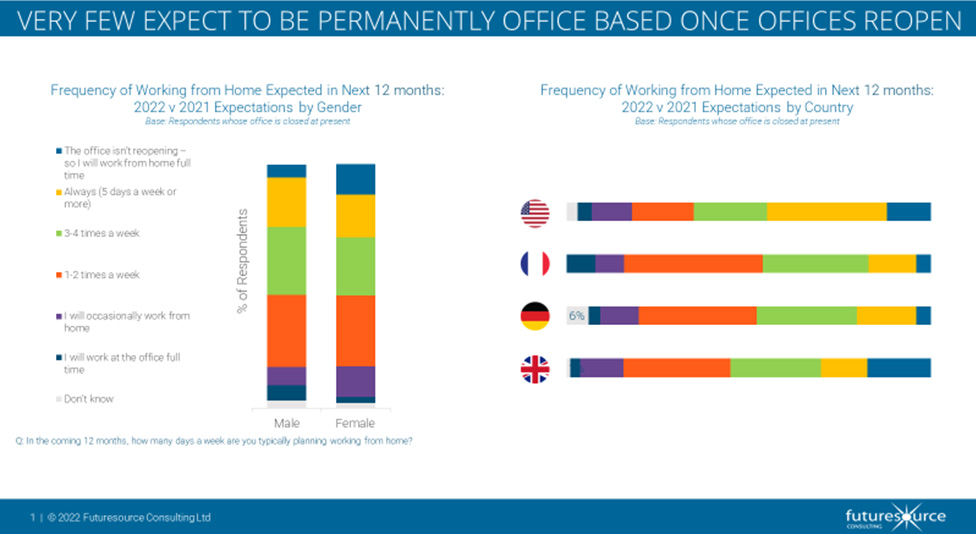Across the USA and Western Europe, 73% of offices are now open, compared to 53% a year ago. Yet only 9% of employees are based in their offices full-time. That’s according to a new home working survey from Futuresource Consulting, which explores the impact of hybrid working and how it is reshaping technology innovation and adoption.
The study interviewed more than 1,500 employees across the USA and Western Europe in February 2022. It shows that employees are now more motivated to invest in equipment that makes their home working experience comfortable and effective. What’s more, employers are more aware of the kinds of equipment which improve remote work, such as lighting and headsets, and may now be better prepared to justify investment in these products.

Hybrid Working no Longer just About the Home
“Future working practices are becoming clearer,” says Alistair Johnston, Head of Collaboration, Futuresource Consulting. “Since our previous study in February last year, there’s now a widespread assumption that the long term will include at least some remote working.
“We’re also seeing a wider range of locations come into play. It’s no longer a straight choice between the home or the office. 41% of employees are regularly working from places like cafes, libraries and co-working spaces. They’re telling us this is motivated by the desire for a change of scenery, access to good Wi-Fi, and time away from distractions. These locations also help to fulfil our needs for in-person interaction during the day, a function traditionally provided by the office environment.”
Consumer Channels Exerting their Influence
Consumer-oriented and retail channels are playing a bigger part in the supply chain. Even where companies are ultimately paying for equipment, in a high proportion of cases employees are choosing and purchasing the products. However, for higher-priced equipment, such as laptop PCs, employers often leverage discounts and take a higher level of control.
Blurred Lines Between Corporate and Personal Devices
“We’re seeing a further blurring of the lines between workplace and consumer technology,” says Johnston, “with homeworking kit being used for non-work purposes. More than one in three use their computing devices for personal admin, while smartphones are widely used for watching videos, listening to music and personal admin tasks. Office headsets are the least likely products to be used beyond the realms of work.”
Device aesthetics are now becoming more important as well. In many instances, these products are entering the general home space, rather than being confined to dedicated home offices. The Futuresource research shows that design and appearance is rated above average as a requirement, as devices must blend into the home environment. Additionally, 37% of respondents stated that design was extremely important to them.
The Rise of VR and the Metaverse
Most employees are familiar with Virtual Reality, with more than eight in ten respondents reporting that they had heard of the technology. Its appeal for use in the workplace is also strong. Almost two in three of those who are VR-aware are also interested in using it for work. That’s around half of the overall respondent base.
“When it comes to embracing VR, there are some significant trends developing based around age,” says Johnston. “Gen Z and Millennials are nearly twice as likely to show an interest than older generations.
“The need to wear a headset doesn’t seem to present a barrier, either, with 89% of respondents willing to do so. Colleague connections and interaction has been identified as a key area for improvement in home working, so the benefits of being more immersed and connected may be driving the appeal of this technology. The continuing evolution of the metaverse may go some way towards satisfying some of the social isolation that comes from remote working.”


